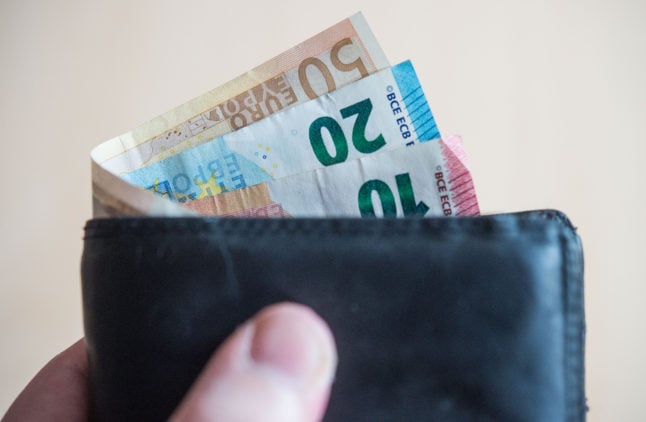To help people cope with the rising cost of living as well as rocketing energy and fuel prices, the German government is giving out a €300 gross payment to workers in Germany.
Here’s a look at how it affects those out of work at the moment, or people not currently in their workplace.
I’m out of work right now. Do I get the €300 payment?
The €300 payment – known as the Energiepreispauschale or EPP – goes out to people in employment who live in Germany. That includes people with marginal employment, such as those with mini-jobs, in temporary employment, trainees and students in paid internships.
It will generally be paid by the employer through the payroll in September and should appear on your payslip under the letter ‘E’. Keep in mind that the amount is subject to tax.
People who are self-employed can deduct the lump sum from their advance tax payments in September. There is also the option of claiming it back with a tax declaration next year.
READ ALSO: What you need to know about Germany’s €300 energy relief payout
Those who are not in employment do not get this specific payment. However, the one-off allowance is valid for people who have worked at some point in 2022.
The requirements to get the payout is that you live in Germany and have received income in 2022.
“All persons who reside or habitually reside in Germany during the year 2022 (unlimited income tax liability) and have earned certain income in the year 2022 are eligible for the EPP,” a spokesman from the Finance Ministry told The Local.
In a question about when and for how long work must be carried out in Germany to receive the payment, the Finance Ministry said: “Taxpayers must generate qualifying income in 2022. The activity does not have to be carried out at a specific time or for a minimum duration.”
In this case, the person wouldn’t get it from an employer, but they can claim the payout with their tax return.
“If there is no current first employment relationship on September 1st, 2022 (e.g., due to unemployment), payment of the EPP will be made by filing an income tax return for the year 2022,” said the Finance Ministry spokesman.
What happens in other cases?
If an employee is registered as unemployed from January to September 2022, but starts working as an employee on October 1st (or another date this year) the employer does not have to pay out the EPP. But it is possible to claim it by filing a tax declaration for 2022.
Meanwhile, employees on parental leave will also receive the EPP if they are getting parental benefits in 2022. As a rule, payment is made via the employer. The worker has to prove to the employer that he or she is receiving parental allowance. However, if no payment is made in this way, employees can also receive the EPP by submitting an income tax return.
Those on sick pay currently should also get the payment from their work. When it comes to people taking a sabbatical, the employer still has to pay out the EPP if they are the main employer.
If a pensioner was in active employment until July 31st for example, and now receives a company pension subject to tax, they won’t receive the payment via their former employer. Once again, they’d have to receive the EPP via the submission of an income tax return for the year 2022.
For a detailed look at different examples, check out the German Finance Ministry’s Q&A page (in German).
What should I do if I have concerns?
You can talk to your tax advisor or the tax office in your area if that is applicable to your situation.
For those in employment, contact your boss or accounts department to ask them for advice as they will be paying it out to staff.
Keep in mind that government has announced a further relief package that will focus on providing support to vulnerable groups, including pensioners and students.
READ ALSO:



 Please whitelist us to continue reading.
Please whitelist us to continue reading.
Member comments